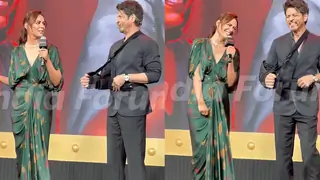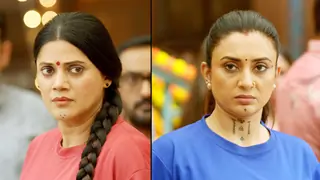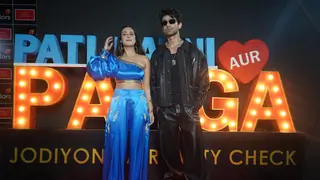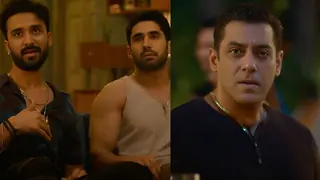The switch in dcor reflects Mr. Padmanabha's own shift as a collector at a dynamic time on India's photography scene. The 61-year-old mechanical engineer began acquiring paintings and drawings in the early 1980s, but now finds himself drawn primarily to photography inspired, in part, by new Indian galleries showcasing this medium.
Photography's power to lure collectors world-wide is matched by the pragmatic fact that it remains far more affordable than many art forms. An installation by Indian artist Subodh Gupta featuring metal utensils piled on a rickshaw recently brought $842,500 at auction, while work by Indian master painters like F.N. Souza command prices as high as $2.5 million. On the other hand, prices for a limited edition photograph by an artist in India range from 20,000 rupees to 600,000 rupees ($416 to $12,500). Over the past two years, such modest prices have attracted relatively younger Indian buyers in their 30s and 40s, seeking to experiment with a medium that their parents barely considered art. Hoteliers, restaurateurs and company directors have been tapping galleries to furnish their walls. Yuppies are turning to photographs for home dcor. Vintage prints, once considered dusty relics, suddenly have cachet and fetch $5,000 or more from private dealers. Artists better known for installations, video and performance are now experimenting with digital cameras.
Contemporary photographers have seized on fresh interest from gallery owners and other patrons to find new audiences and escape expectations imposed by commercial commissions. There is more of an incentive to do our own projects. We create totally under our own steam, says Clare Arni, a British photographer born in India who lives in Bangalore and makes a living primarily as an architectural photographer. In November, Ms. Arni exhibited a suite of works in vibrant colors documenting disappearing professions in Kolkata, New Delhi, Bangalore and Chennai, such as silk dyers, medicine grinders and painters of movie posters a product of 18 months of research and travel. The show sold out two editions of prints.
Some gallery owners contend that the current financial uncertainty might actually be good for photography-collecting by allowing it to mature without the crazed speculation that infected the overall Indian art market.
'Street barbers, Nizammudin,' from Clare Arni's exhibition, 'Disappearing Professions in Urban India'
That includes short-term investors who in recent years kept some artwork especially paintings in storage while seeking to flip them for quick profit. The fact is, we need to have more collectors than speculators, says Devika Daulet-Singh, director of photography at PhotoInk, a specialized gallery that opened in New Delhi in February 2008. If you can't see the work on somebody's wall, how are you going to develop an aesthetic or a taste for it? she adds.
India experienced a rather curious lag in photographic appreciation compared with the West. Christopher Pinney's book Camera Indica notes that the medium arrived in India shortly after its invention in 1840 and was promptly embraced by British rulers and India's upper echelons. Photography played a vital role in the formation of the Empire and informing the citizenry back home about the lands and the people under conquest, Mr. Pinney writes. Studio photography by Europeans and Indians also supplied a steady stream of portraits.
In the country's art world, however, Indian painting and sculpture long held a more privileged position. Until a decade ago, photography was largely denigrated as an advertising tool or journalistic reinforcement of an India that was viewed by the rest of the world as poor and backward.
The map was sharply divided: Mumbai sheltered most of the commercial photographers, New Delhi claimed the bulk of photojournalists and Bangalore offered more opportunities to wildlife photographers, given its access to nature sanctuaries in southern India.
But as prices escalated in the Indian art world for seasoned painters and novices alike, a quiet backlash grew stronger. The ranks of disillusioned collectors included tea and explosives entrepreneur Abhishek Poddar. He and his friends, who began collecting as teenagers, started getting a little bored with the art scene, he says.
'Belle' from Portfolio 1 of Annu Palakunnathu Matthew's collection of photos called 'An Indian from India'
Anything and everything would sell, as long as it was fashionable. Prices were going crazy. There was no soul left in it, complains the 40-year-old collector. I can't say this about every artist. But it was more the norm than the exception.
Turning to photography in 2000, Mr. Poddar found himself disheartened by the fact that photographers had few opportunities to exhibit their work, even though their prices were quite affordable. That realization eventually led to the September 2006 launch of Tasveer ("picture" in Hindi), a pioneering photography consortium led by Mr. Poddar that began with a gallery in Bangalore and currently also organizes shows in New Delhi, Mumbai and Kolkata together with local partners. The consortium has helped blur categories of photographers by providing an outlet for more creative impulses. People thought we were a little mad, Mr. Poddar adds. They said, Why photography, and, who buys photography?
Basic information on the medium was scarce, let alone any kind of sophisticated critical discourse. Photography as a medium has never been taught in Indian art schools. So there is no sense of its history or its practice, says Sunil Gupta, a New Delhi-based photographer and curator who was educated at the Royal College of Art and worked for many years in Britain.
Mr. Gupta and fellow curator Radhika Singh met with hundreds of photographers throughout the country and sifted through countless boxes of prints to put together the Click! exhibition in New Delhi and London in early 2008. The show included the works of 150 photographers. While many London buyers were willing to purchase unfamiliar names, Indian collectors gravitated toward the more famous photographers such as Raghu Rai, who was recruited by Henri Cartier-Bresson in 1977 to work with Magnum Photos.
Some art promoters seem willing to wait for the market to build and collectors to embrace new talent. There is no money to be made immediately, acknowledges Arun Vadehra, owner of Vadehra Art Gallery, the New Delhi venue for the Click! Show. We are just investing in the future for something which will become very, very lucrative. When more and more shows happen, more talent will emerge and more people will take chances, he says.
A current favorite among collectors at home and abroad is Dayanita Singh, whose studied black-and-white prints marked the November opening of the Berlin branch of the New Delhi gallery Nature Morte. Ms. Singh's show, Let Me Go, which ended earlier this month, encompassed images of an ashram in Varanasi, a treatment center for mental illness in Gujarat, and portraits of a eunuch she befriended over the course of 13 years. The photographer is perhaps better known, though, for her work in documenting upper- class families in Kolkata and capturing iconic images related to Indian history, such as a white jacket worn by former Prime Minister Jawaharlal Nehru.
New Delhi advertising executive Swapan Seth acquired the photograph of the jacket for his collection. I thought it was extremely important for my children, says Mr. Seth.
Such feelings aren't unusual, says Ajay Rajgarhia, who launched an online business in fine art photography in mid-2007 called Wonderwall and is pressing ahead with exhibitions in several Indian cities early this year despite the economic slowdown. For the collector, it's also an emotional decision. For an investor, it's a numbers game, he says.
As India's photography aesthetic continues to evolve, many collectors wish to avoid the images of deprivation often seen in the press. India is a country that has enough problems and misery. It's not that one wants to run away from it or shy away from it, but sometimes you don't want it staring you in the face, says Rahul Chowdhury, a New Delhi-based cable manufacturer who since 2006 has collected some 75 photographs, from colorful, kinetic scenes of Mumbai to a contemplative black-and-white portrait of bicycles on a remote beach.
Walking a visitor through Gallery Art & Design, the New Delhi photography gallery she opened in August, Sangeeta Agrawal points to an image of two slender rural boys on a bicycle. Indians won't go for this. They won't relate to it. It shows poverty, she says, holding out hopes that a foreign collector might find the print compelling. She moves on to a vivid image of a red monastery door that has sold several times over. Indians want to see something more opulent and happy in their homes, Ms. Agrawal says.
Mr. Rai, the Magnum Photos photographer whose Domes of Fame occupies pride of place in Mr. Padmanabha's home, derides collectors who prefer happy, snappy, pretty stuff. His own work, he says, aims to reflect the peculiar complexities of his native land. India being a multicultural, multireligious society, the experience of India has to be multilayered in each image, Mr. Rai says. The multiplicity of moments in one given image it is so much to experience. That's what I am aiming at with those panoramic pictures.
The Songbird of 'Slumdog'
Hip-hop star M.I.A. on her Oscar and Grammy nominations. Hip-hop artist M.I.A. recently rocketed from the experimental underground to the pinnacle of the entertainment world. "O Saya," her collaboration with Indian composer A.R. Rahman from the "Slumdog Millionaire" soundtrack, is one of three nominees for the best-song Oscar. And her track Paper Planes is in contention at this weekend's Grammy Awards for record of the year the Recording Academy's top honor.
Born Mathangi Arulpragasam in Britain, the future singer returned with her family to her parents' native Sri Lanka when she was 6 months old. The family, who are members of Sri Lanka's ethnic-Tamil minority, moved to Jaffna, in the island nation's north. Not long afterward, the country erupted into civil war between the Tamil Tigers and the Sri Lankan government, and violence consumed Jaffna.
As a child, Ms. Arulpragasam rarely saw her father, Arul Pragasam, who was involved in the Tamil-separatist movement though she says he was part of a more political faction than the violent and better-known Tigers.
At age 10 she fled with her mother, elder sister and younger brother first to India and then back to London, where her mother now works as a seamstress and M.I.A. attended art college.
M.I.A.'s songs appear in 'Slumdog Millionaire.'

Ms. Arulpragasam says her harrowing life has informed both the lyrics and sound of her songs. After her song Paper Planes was included last year in a trailer for the stoner comedy Pineapple Express, it became M.I.A.'s first hit and an unlikely one at that. The song's signature element, gunshot sounds that are part of its rhythm bed, generated controversy. The song's refrain is the seemingly aggressive chant: All I wanna do is Pow! Pow! Pow! Pow and take your money. But M.I.A. calls the song an ironic comment on the way Westerners perceive Third World immigrants.
Ms. Arulpragasam now lives in Los Angeles, where she is starting a family of her own under far gentler circumstances than the ones in which she was raised. She and fianc Benjamin Brewer are expecting her first child as soon as this weekend.
In her own words: I'm nominated for a Brit Award in England. But for me nominations are not like a musical thing. It's more like me having a platform. The point of success is being able to tell a wider audience about the situation in Sri Lanka.
On her lyrics: I've seen, with my own eyes, a lot of s- go down. I've seen people get massacred in front of me. My school was burned to the ground when I was 6 years old. When you come from that kind of background, you do become matter of fact, and tell it like it is. If you think lyrics about guns are bad, I shouldn't have been shot at when I was 7 years old.
On A. R Rehman: I'm not used to recording in $1 million studios. I approach music as an experimental artist. I go out in the street and record people in their element; I play around with drum machines and samplers. I make a whole bunch of mess and see what works. A.R. Rahman works in a much more professional way than I do, with a lot of professional people. But I love him musically. He's been the only composer in every Tamil film that I've watched and liked. When I first met A.R. [while recording her album "Kala"], I wasn't that big. My music wasn't Tamil-sounding, it didn't sound like average music coming out of the West, but it wasn't mainstream Indian, either.O
n her father: He was a member of a group called EROS Eelam Revolutionary Organization of Students. He was an intellectual who intellectualized the war, even while it was going on. He tried to mediate between the [Sri Lankan] government, the Indian government and the Tamil Tigers. That was his dream, to mediate an agreement. When he failed, he got discouraged and quit politics. He moved to Cambridge to research and write books about sustainable development.
On her grammy nomination: We're planning a home birth, but it might be a Grammy birth! Eating a hot curry could make me go into labor, so imagine what getting on stage with Jay-Z, Lil Wayne and T.I. would do. Everyone's been very understanding.






![[Manmohan Singh]](https://s.wsj.net/public/resources/images/HC-GE464_Singh_BV_20080928190611.gif)
![[Golden Train photo]](https://s.wsj.net/public/resources/images/AW-AG063A_GOLDE_CV_20090121111542.jpg) The Golden Chariot
The Golden Chariot 




![[Indian Property Stocks]](https://s.wsj.net/public/resources/images/AI-AT495_INDIPR_NS_20090202152417.gif)













